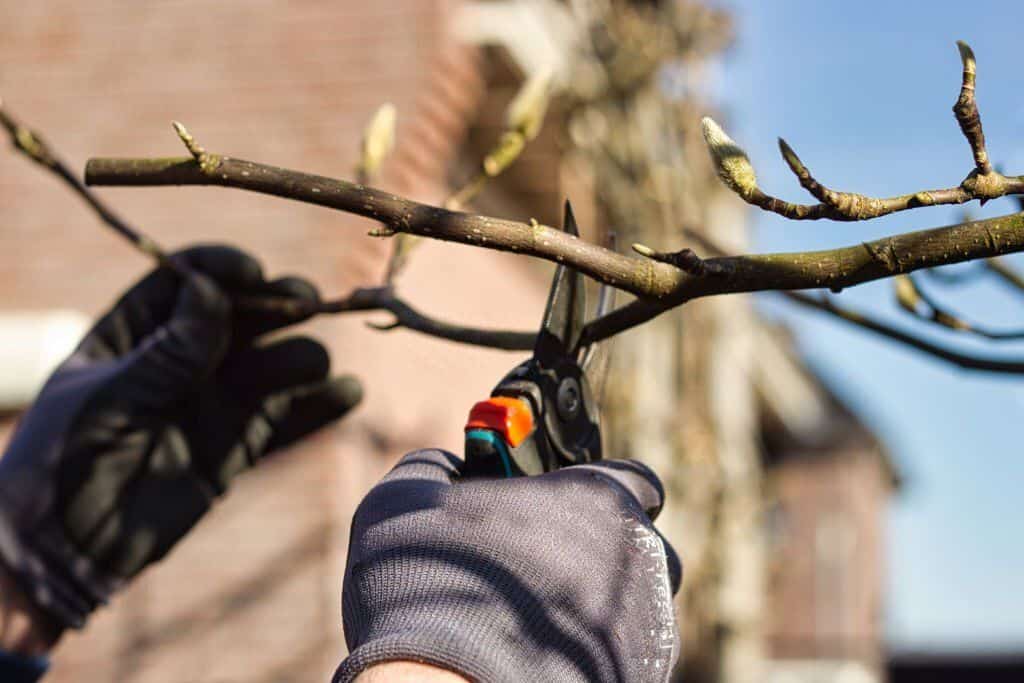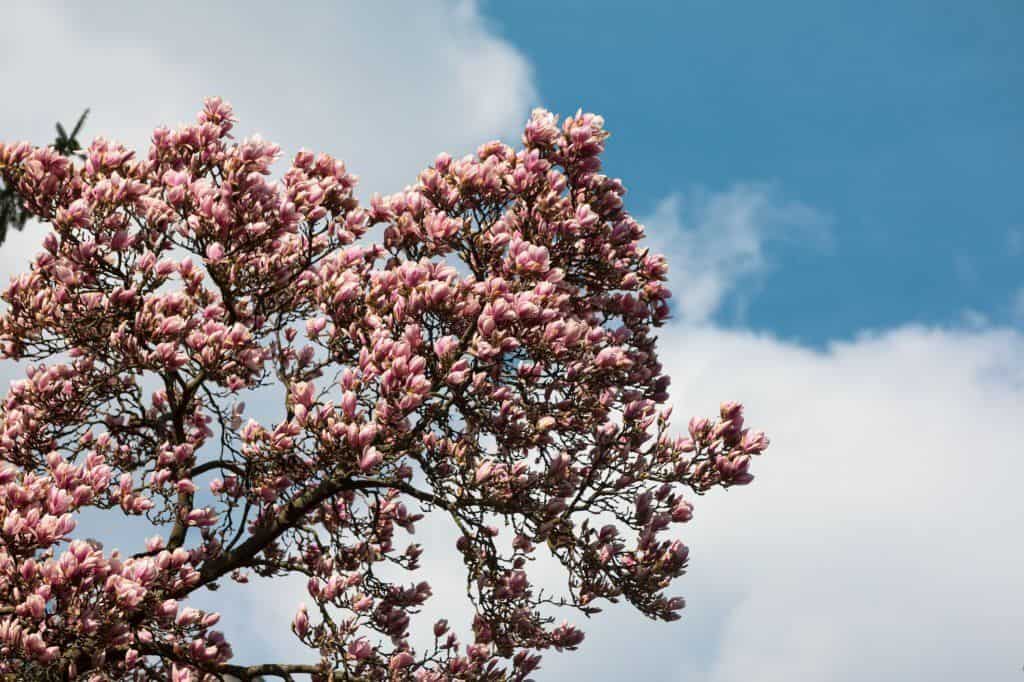Is your once-charming magnolia tree starting to resemble a wild jungle? If so, don’t worry – learning how to trim an overgrown magnolia tree is not difficult at all.
We’ve got your back with a simple and effective guide on how to trim that overgrown beauty and bring back its elegance. Whether you’re a seasoned gardener or a newbie with a pair of pruning shears, we’ll walk you through the process step by step.
Imagine strolling through your garden, the sunlight dappling through the lush leaves of your well-maintained magnolia tree. It’s a scene straight out of a fairytale, right? But if your magnolia has grown unruly, with branches reaching out in all directions, it might be time for some TLC.
In this blog post, we’ll break down the art of trimming an overgrown magnolia tree into easy-to-follow steps. You’ll discover the best time to trim, the essential tools you’ll need, and the techniques that will ensure your tree thrives. By the end of this guide, you’ll be equipped with the knowledge and confidence to transform your magnolia into a picturesque centerpiece for your garden.
So, grab your gardening gloves and prepare to transform your overgrown magnolia into a garden showstopper!

Why Trimming Your Magnolia Tree Is Important
Magnolia trees are a sight to behold with their stunning flowers and lush foliage. But did you know that trimming your magnolia tree is vital for its health and your garden’s beauty? Let’s explore the top reasons why you should trim your magnolia tree.
1. Aesthetic Appeal
One significant reason to trim your magnolia tree is to make it look beautiful. Over time, magnolias can grow wild and messy, with branches sticking out in all directions. Trimming helps keep your tree neat and tidy, enhancing the overall appearance of your garden.
2. Health and Vigor
Think of trimming as a health checkup for your magnolia tree. When you trim it, you remove dead or diseased branches. These branches can harm the tree and even spread sickness to other parts. Trimming helps your tree stay healthy and strong.
3. Safety First
Overgrown branches can be risky. During storms or strong winds, they might break and fall, causing damage to your property or even hurting someone. Trimming keeps your magnolia safe, reducing the chance of accidents.
4. Promotes More Flowers
Who doesn’t love the beautiful magnolia blossoms? Trimming can actually encourage your tree to produce more flowers. When you prune the right way, you stimulate new growth, resulting in a more vibrant and flowery display during the blooming season.
5. Maintains Shape
Magnolia trees have a natural shape that makes them so appealing. But if left untrimmed, they can lose that shape and become unruly. Trimming helps maintain the tree’s natural form, keeping it looking just right.
6. Encourages Airflow
Healthy trees need good airflow. When a magnolia gets too dense, air can’t circulate properly, which can lead to disease. Trimming out some interior branches helps air move freely, keeping your tree happy.
7. Prevents Overgrowth
If your magnolia tree gets too tall, it might be difficult to manage. Trimming can help control its height, so it doesn’t grow too big for your garden. Be careful not to cut too much at once, though, as this can stress the tree.
In simple words, trimming your magnolia tree is like giving it a haircut. It keeps it looking great, healthy, and safe. It encourages more flowers, maintains its shape, and prevents it from growing too big. So, don’t forget to give your magnolia tree some love and care through regular trimming.
A Comprehensive Guide on How to Trim Your Magnolia Tree
Magnolia trees, with their iconic blossoms and elegant foliage, are a cherished addition to any garden or landscape. However, like all plants, they require proper care to thrive and maintain their beauty. One essential aspect of magnolia tree care is knowing how to trim them correctly.
In this comprehensive guide, we’ll provide you with step-by-step instructions and expert tips on how to trim your magnolia tree effectively.
1. Gather Your Tools
Before you start trimming your magnolia tree, it’s essential to gather the necessary tools:
Pruning Shears: These are ideal for small branches and precise cuts.
Loppers: You need these tools to gain better leverage when dealing with thicker branches.
Hand Saw: A small hand saw can be useful for branches too large for loppers.
Safety Gear: Safety glasses and gloves to protect your eyes and hands.
2. Choose the Right Time
The ideal time to trim a magnolia tree is during late winter to early spring, during its dormant period. Trimming during this time promotes new growth when the growing season begins.
3. Identify the Branches to Trim
Carefully inspect your magnolia tree and identify the branches that need trimming. Look for:
Dead or Diseased Branches: These are the most critical to remove as they can harm the tree and spread disease.
Crossing Branches: Branches that rub against each other can cause damage and should be pruned.
Overcrowded Interior Branches: Thinning the canopy by removing some interior branches improves air circulation.
4. Making the Cuts
When making cuts on your magnolia tree, follow these guidelines:
Cut at a Node: Always make your cuts just above a node or lateral branch. This encourages new growth in the right direction.
Angle the Cut: Angle your cut slightly to allow water to run off, preventing rot.
Clean Cuts: Use sharp, clean tools to make smooth cuts. Ragged cuts can slow healing and invite disease.
5. Prune for Size Control
If your magnolia tree has become too tall or wide for your space, follow these steps:
Reduce Height: To reduce height, cut back the upper branches. But be cautious not to remove more than one-third of the tree’s height in a single season.
Control Width: To manage the tree’s width, trim branches that extend beyond your desired boundaries.
6. Dispose of Debris
After you’ve finished trimming, gather and dispose of the pruned branches properly. This prevents the spread of disease and keeps your garden clean.
7. Monitor and Repeat
Regularly inspect your magnolia tree for new growth, deadwood, or branches that require attention. Pruning is an ongoing process, and by staying vigilant, you’ll ensure the continued health and beauty of your magnolia tree.
Read this post: How Do You Treat Fungus on a Magnolia Tree? A Quick Guide

Timing is Everything: When to Trim Your Magnolia Tree
Magnolia trees are a treasure in any garden, admired for their enchanting blooms and graceful presence. However, to keep these arboreal wonders healthy and beautiful, knowing when to trim them is essential. Timing is everything when it comes to magnolia tree care.
However, before delving into the “when,” it’s crucial to understand the natural growth cycle of magnolia trees. These trees typically have two primary periods of growth:
Spring Growth: In the spring, magnolias produce new branches and foliage. This is when they display their iconic, breathtaking blooms. Trimming during this period can disrupt the flowering process and should generally be avoided.
Dormant Season: The dormant season occurs in late winter, usually between late January and early March, depending on your region’s climate. During this time, magnolia trees are in a resting phase, making it the ideal time for pruning.
The Ideal Time for Magnolia Trimming: Late Winter to Early Spring
Late winter to early spring, during the dormant season, is universally considered the best time to trim magnolia trees. Here’s why:
Disease Prevention: During the dormant season, diseases and pests are less active. Pruning during this time reduces the risk of introducing pathogens through freshly cut wounds.
Promotes Vigorous Growth: Trimming during dormancy stimulates new growth as soon as spring arrives. This ensures that the tree redirects its energy into producing healthy branches and leaves.
Enhanced Flowering: Pruning during the dormant season can encourage magnolias to focus on flower production rather than growing new branches. This results in a more bountiful and visually appealing display of blossoms.
Clearer Vision: Without the cover of leaves, it’s easier to see the tree’s structure and identify which branches require attention.
Exceptions: Emergency Pruning and Deadwood Removal
While late winter to early spring is the recommended timeframe for magnolia tree trimming, there are exceptions. If your tree faces an emergency situation, such as a broken branch or safety hazard, you should address it promptly, regardless of the season.
Additionally, deadwood can be removed at any time of the year. Dead branches pose a risk to the tree’s overall health and safety, so don’t hesitate to remove them as soon as you notice them.
Pruning Young vs. Mature Magnolia Trees
The age of your magnolia tree can also influence when to trim:
Young Magnolias (1-5 years old): For newly planted or young magnolia trees, focus on shaping and training during the first few years. Prune in late winter or early spring to encourage a strong, well-structured framework.
Mature Magnolias (5+ years old): Established magnolias require less pruning. Concentrate on removing dead or diseased branches and maintaining their natural shape during the dormant season.
Bottom Line
Timing is indeed everything when it comes to trimming your magnolia tree. By adhering to the dormant season schedule of late winter to early spring, you’ll not only maintain the tree’s health and beauty but also enhance its overall vitality. Remember to perform regular inspections and emergency pruning as needed to ensure your magnolia tree continues to grace your garden with its majestic presence for years to come.